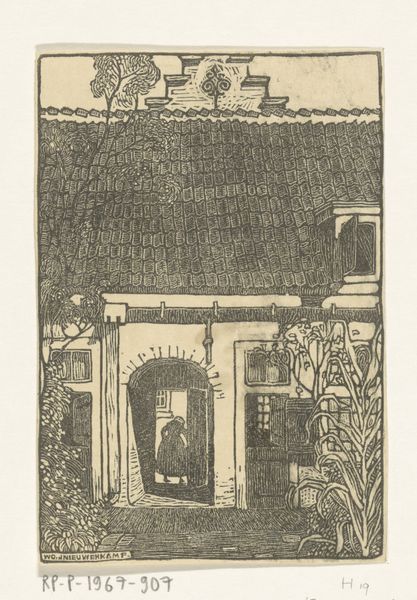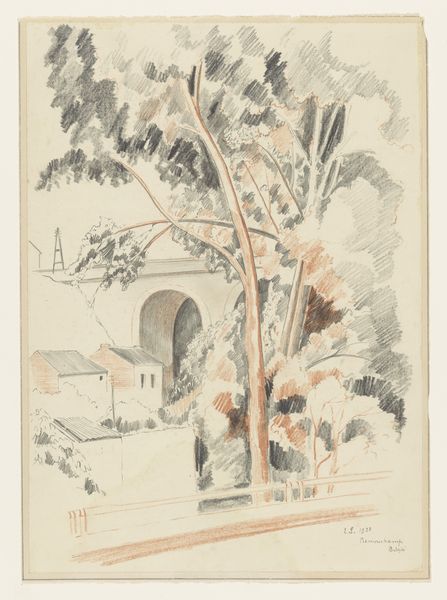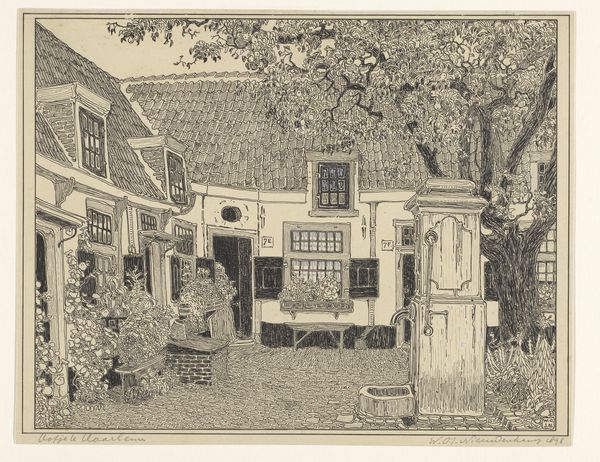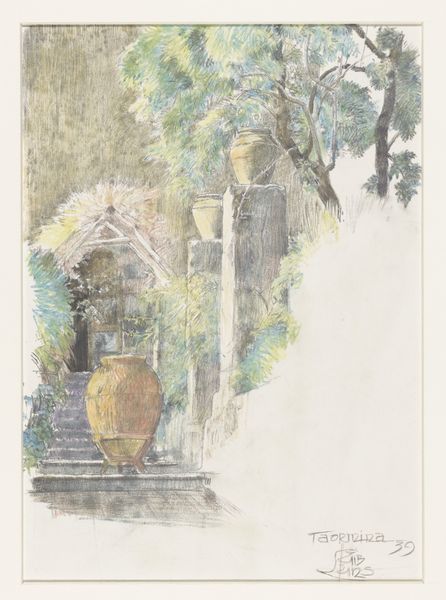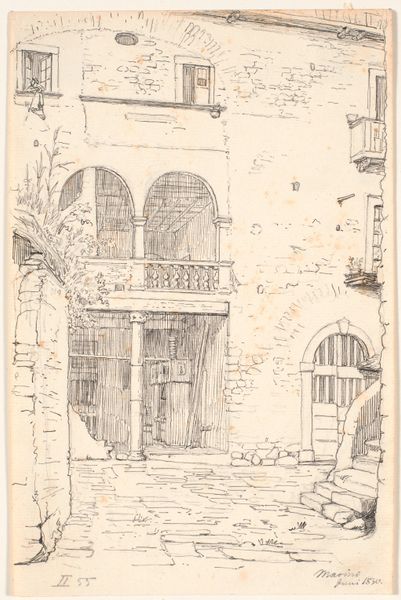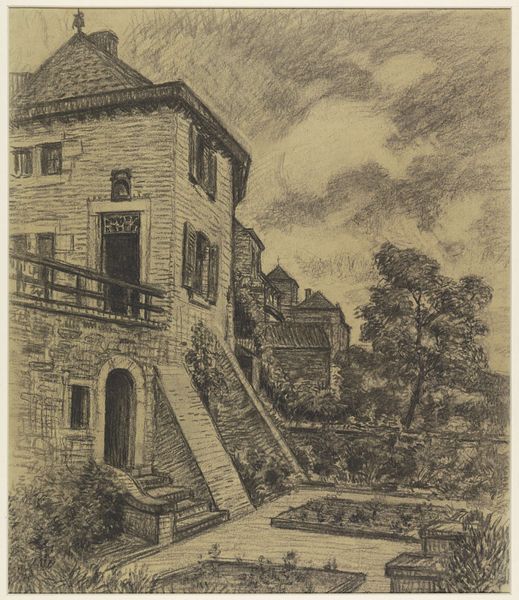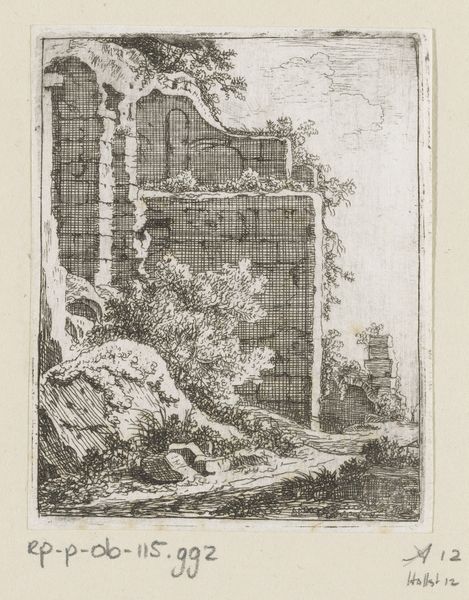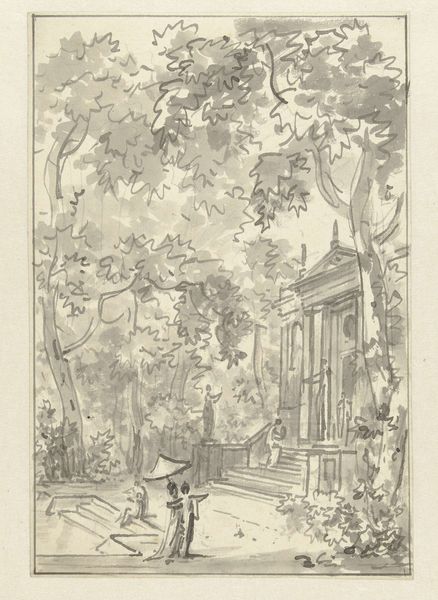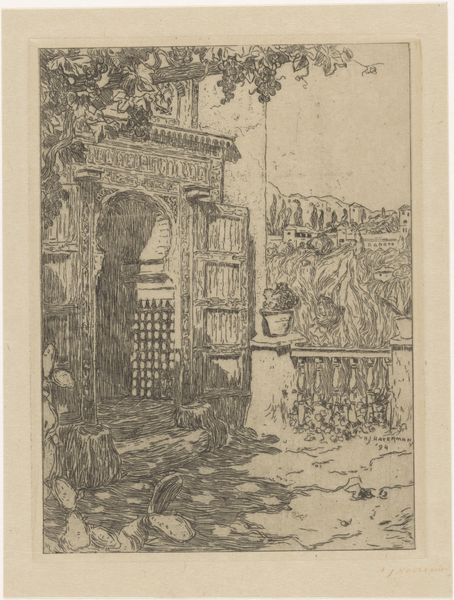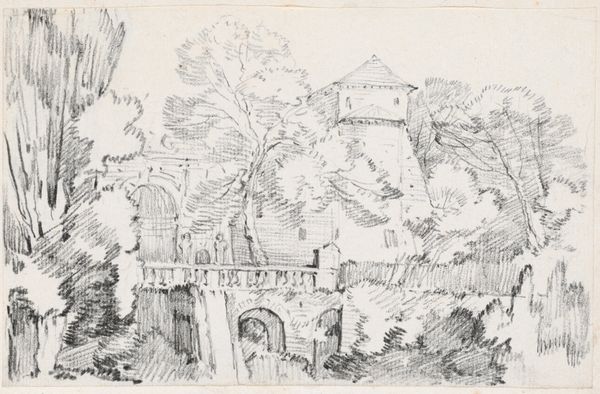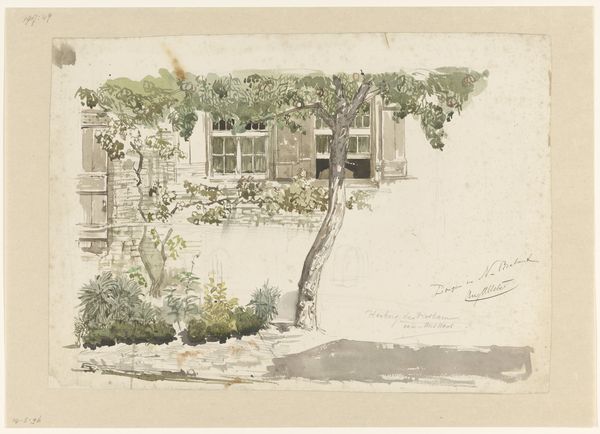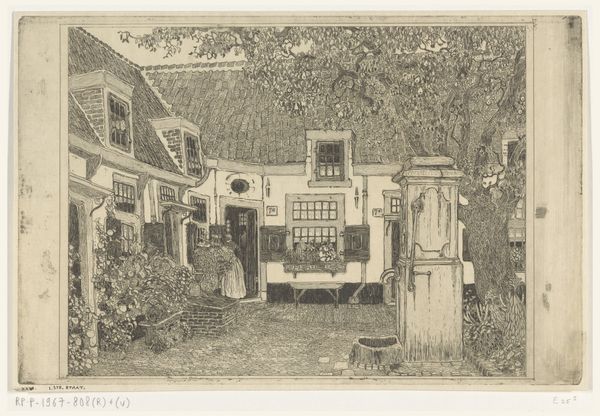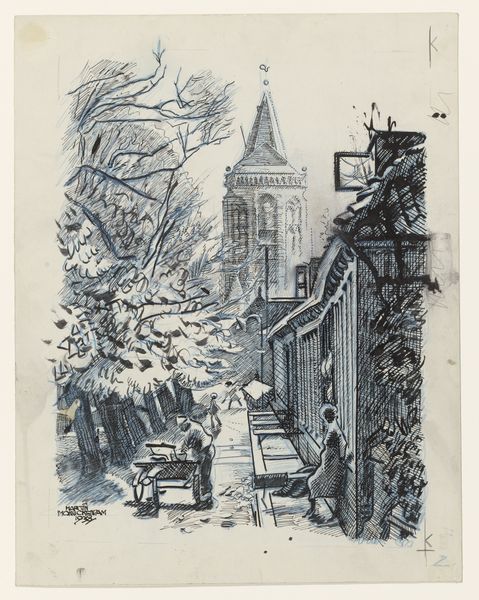
drawing, ink, pen
#
landscape illustration sketch
#
drawing
#
pen drawing
#
dutch-golden-age
#
pen sketch
#
landscape
#
perspective
#
personal sketchbook
#
ink
#
pen-ink sketch
#
line
#
pen work
#
sketchbook drawing
#
pen
#
cityscape
#
storyboard and sketchbook work
#
sketchbook art
#
doodle art
#
realism
Dimensions: height 365 mm, width 290 mm
Copyright: Rijks Museum: Open Domain
Curator: Welcome. Here we have Martin Monnickendam's 1938 pen and ink drawing, titled "Huis te Edam of Monnickendam," depicting a Dutch cityscape. Editor: It's wonderfully dense! Almost overwhelmingly so, but in a way that makes you lean in closer. It's like a visual puzzle of textures and overlapping forms. I want to untangle it. Curator: Monnickendam, working in the early 20th century, had a particular interest in urban environments and Dutch daily life. It's fascinating to consider the socio-political contexts that shaped such depictions during this era. How does the style evoke its time? Editor: Oh, definitely pre-war. There's an air of gentle industry, quiet domesticity, not yet shattered. It's romantic, with all this elaborate foliage framing the architecture like a stage set, but grounded, too. The intricate detail brings it to life. Makes me wonder who lived there and what their days were like. Curator: Indeed, it raises questions about representation, class, and the portrayal of Dutch identity. The architectural style, combined with the surrounding greenery, speaks to a particular vision of affluence and cultural values within Dutch society at the time. Editor: The cross-hatching is relentless. It feels urgent. The drawing must have been completed on site, almost desperately trying to capture every detail of that house before the light changes. The romantic statues really make the difference! What do you make of them? Curator: Their presence brings an interesting historical lens to the drawing, pointing back to the enduring influence of classical forms on Dutch art and culture and reflecting the intersection between artistic traditions and national identity. Editor: Well, I for one find them quietly subversive, almost a critique on the stuffy Dutch bourgeois who owned them and put on a pretense of classical art appreciation while Monnickendam found the true essence of Dutch art, hidden within his meticulous observation. So where did it leave us? Curator: With a new sense of social identity, and artistic freedom, to appreciate history, critique values, and ultimately transform a society with an artistic revolution. Editor: Yes, so let's do exactly that...
Comments
No comments
Be the first to comment and join the conversation on the ultimate creative platform.
